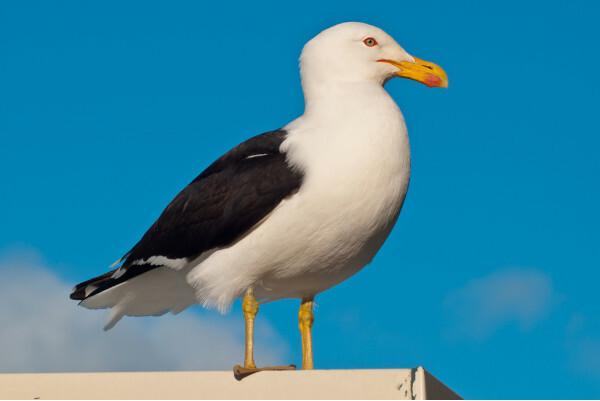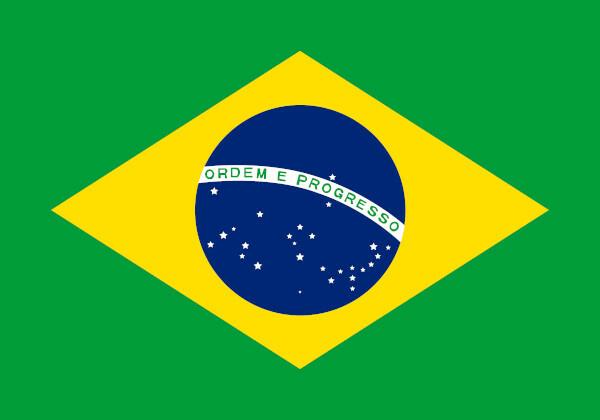A seagull It is an animal belonging to the Laridae family. It is about a bird sea that presents an omnivorous feeding habit, consuming, therefore, living beings of different trophic levels. These birds have long, narrow wings and their feet have swimming membranes. There are different species of seagulls, one of which is the seagull, which can be seen in Brazil.
Know more:Bird adaptations to flight — the specific anatomy of birds
Topics of this article
- 1 - Summary about seagull
-
2 - Characteristics of seagulls
- Video lesson about birds
- 3 - Feeding the seagulls
- 4 - Problems caused by the increase in the number of seagulls
- 5 - Seagull, one of the species of seagull
summary about seagull
seagulls are animals belonging to the Laridae family.
They have long, narrow wings and short feet with swimming membranes.
Adult gulls have different plumage than juveniles.
They are omnivorous animals, however, fish are one of the favorite foods of these birds.
They are opportunistic, being able to consume dead animals that they find on the beach or garbage and even steal prey from other birds.
In some regions, the increase in the number of seagulls has caused problems.
characteristics of seagulls
Seagull is the name given to different species seabirds belonging to the Laridae family. The term seabird is used to refer to birds that get their food from the low tide line to the open sea. The marine environment is fundamental to their survival. Seabirds are classified into two groups: oceanic seabirds and coastal seabirds.
Do not stop now... There's more after the publicity ;)
When we speak of oceanic seabirds, we are referring to species that obtain their food especially in the sea and reproduce and rest in Islands oceanic. the seagulls they are coastal seabirds, as they get their food and reproduce in regions within the limits of the continental shelf and adjacent areas.

Seagulls are birds that They have a strong beak, long narrow wings, a short tail and feet. with webbing between fingers. The feathers show variation during the years of the animal's life, and the definitive plumage is acquired only after a few years of life.
In larger species, adult plumage is acquired after four to five years. In smaller species, however, this time is shorter (between one and two years). Feathers allow us to identify juveniles and adults. However, mAchos and females are difficult to differentiate.
Video lesson about birds
seagulls feeding
Seagulls areomnivorous animals, i.e, eat both plant-based and animal-based foods. They can eat the remains of dead animals and even garbage. They are capable of hunting their own food, but they can also steal the prey of other seabirds, a behavior known as kleptoparasitism.
Some authors say that gulls are capable of ingesting virtually any material, as long as the size and texture are adequate. |
Problems caused by increased numbers of seagulls
Over the last few years, there has been a considerable increase in the number of seagulls in some coastal regions. This growth is related, among other factors, to the ability of seagulls to:
develop in environments modified by man;
reproduce throughout most of the year.
It is worth noting, however, that just as the extinction of a kind causes environmental imbalance, the exaggerated increase also has serious consequences. Therefore, the increase in the population of gulls, in the first place, endangers other shorebird species, since there are competition by resources.
Furthermore, seagulls are capable of transporting pathogens, like the bacteria of the gender escherichThe, Proteus It is salmonlthere, that can cause disease in humans and other animals. It is important to point out that in regions where there are a lot of seagulls, complaints about their:
noises;
aggressive behavior;
large amounts of excrement.
It is also worth noting that it affects tourism, since regions with many seagulls end up becoming less attractive for visitation, thus causing a drop in tourist revenue in these places. Finally, there is the threat of collision with aircraft.
See too: Ostrich — the largest bird on the planet
Seagull, one of the species of seagull
The seagull (Larus dominicanus) is a species widely distributed in the southern hemisphere and that stands out as the most common larid on the Brazilian coast. It is the largest seagull in the world. Brazil, reaching about 58 cm and weighing approximately 1 kg.
Young specimens and adult specimens have different plumages. The young individual has gray-beige feathers, with brown spots, and a black tail. The adult, in turn, presents the region of the back and the upper parts of the wings black, and the head and the underparts are white. The beak of adults has a red spot, while the young individual has a black beak.
Like other gulls, the gull is an omnivorous species. It is considered opportunistic and generalist, capable of consuming different prey and exploiting different food sources. The main components of the diet of these birds are fish and invertebrates marine.It is common to see seagulls accompanying fishing boats in order to take advantage of what was rejected by human beings.
The gull lays, on average, three eggs, which are deposited in nests built among vegetation, rocks or in the ground. Nests are usually built with grasses and bravely defended by the animal. After birth, chicks receive food from their parents until they are able to fly.Sexual maturity is reached around four years of age, when they acquire adult plumage.
By Vanessa Sardinha dos Santos
Biology teacher
Escherichia coli is the name of a bacterium that inhabits the intestine of endothermic animals. The presence of E. coli can indicate poor water and food quality.
Click here and learn more about the albatross. In this text, we will learn about the general aspects of this animal, its reproduction and the main threats to its species.
Click here and learn more about the macaw. In this text we will approach the general characteristics of this animal and we will know some of its species.
Find out what a bird's body looks like, as well as its adaptations to its way of life.
Do you know what environmental imbalance is? Click here and understand what is environmental imbalance. Know its causes and consequences.
Learn a little more about Salmonella bacteria and understand the diseases they cause, especially salmonellosis.


